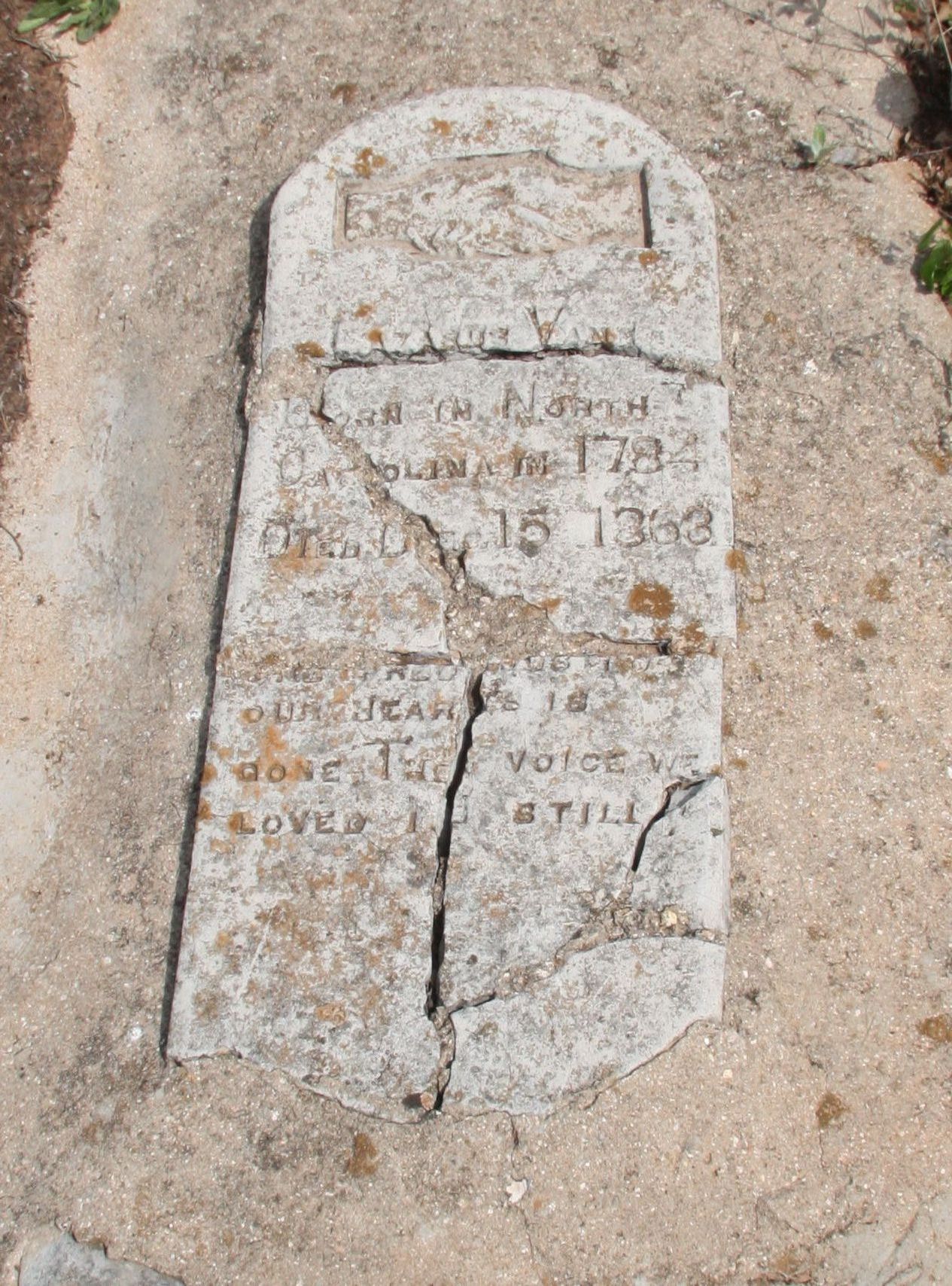The verse on the stone is: "One precious to our hearts is gone, the voice we loved is still." (Ed note: Later I quoted this verse to my dad, Henry Vann, and he continued it with: "The place made vacant in our home can never more be filled.")
One of the graves near Lazarus is that of a Mexican sheep-herder who died of natural causes. A second grave is that of Mr. Ions, who worked for Mr. Burleson on a nearby ranch. It was said that Mr. Ions was shot in the back at night as he squatted by a campfire with his cape drawn over his head to keep warm. He was presumed to have been shot by an Indian, however, my grandfather always questioned this version of "who shot Mr. Ions?"
The other grave belongs to the Braddock boy. The Braddocks came to Brown County about 1875. The Braddock house was a log cabin which stood on the bank of Blanket Creek. The Braddocks were breaking wild horses, and one horse wwas brought in that was wild and mean. The other cowboys got a saddle on him and were holding him down. The Braddock boy, about 21 years old, settled in the saddle and yelled to "let him go and I'll ride hm to Hell!" The house reared up in the air and fell backwards on him, killing him almost instantly. I was told that he is buried there beside Lazarus, but I cannot swear to this.
My grandfather had a good practical education. He was a singing teacher and loved to sing. Back then the old "fa-so-la-te" method was used to read music. Those four notes were all used in the rudiments of music at the time. The children were all taught at home, but as time passed more settlers began to come in. They got together with the most influential and religious-inclined, met and organized a school and church. A one-room log house was built just east of the present Zephyr Cemetary. The first teacher's name was Will Dugan. He was lame from White Swelling – later called poliomyelitis.
Submitted by Wylene Yoes - April 3, 2014
The verse on the stone is: "One precious to our hearts is gone, the voice we loved is still." (Ed note: Later I quoted this verse to my dad, Henry Vann, and he continued it with: "The place made vacant in our home can never more be filled.")
One of the graves near Lazarus is that of a Mexican sheep-herder who died of natural causes. A second grave is that of Mr. Ions, who worked for Mr. Burleson on a nearby ranch. It was said that Mr. Ions was shot in the back at night as he squatted by a campfire with his cape drawn over his head to keep warm. He was presumed to have been shot by an Indian, however, my grandfather always questioned this version of "who shot Mr. Ions?"
The other grave belongs to the Braddock boy. The Braddocks came to Brown County about 1875. The Braddock house was a log cabin which stood on the bank of Blanket Creek. The Braddocks were breaking wild horses, and one horse wwas brought in that was wild and mean. The other cowboys got a saddle on him and were holding him down. The Braddock boy, about 21 years old, settled in the saddle and yelled to "let him go and I'll ride hm to Hell!" The house reared up in the air and fell backwards on him, killing him almost instantly. I was told that he is buried there beside Lazarus, but I cannot swear to this.
My grandfather had a good practical education. He was a singing teacher and loved to sing. Back then the old "fa-so-la-te" method was used to read music. Those four notes were all used in the rudiments of music at the time. The children were all taught at home, but as time passed more settlers began to come in. They got together with the most influential and religious-inclined, met and organized a school and church. A one-room log house was built just east of the present Zephyr Cemetary. The first teacher's name was Will Dugan. He was lame from White Swelling – later called poliomyelitis.
Submitted by Wylene Yoes - April 3, 2014






